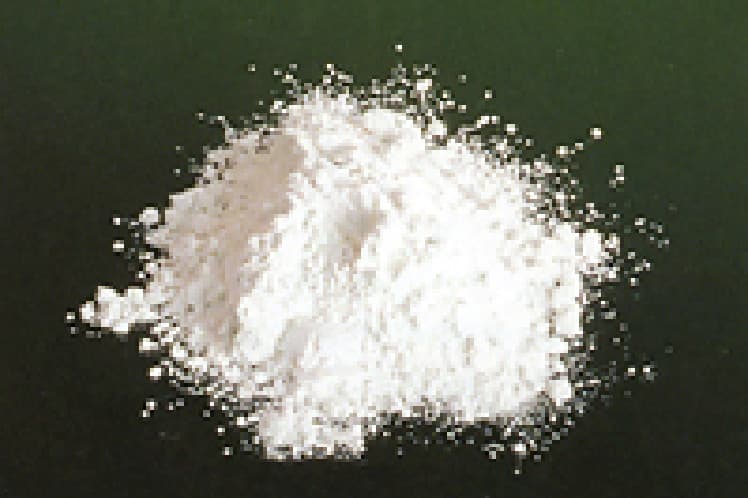Yamanaka Group
Antimony Tetroxide
Antimony Tetroxide (Sb₂O₄)
Compared to antimony trioxide, antimony tetroxide is more physically and chemically stable at high temperatures. Therefore, when used for engineering plastics that have high molding temperatures and operating temperatures, it is possible to achieve flame retardancy without reducing the physical properties of the resin.
In addition, there is no catalytic activity with polyester such as shown by antimony trioxide, and addition to polyester resin does not cause a decrease in its functional properties.
Existing chemical substance: 1-543 CAS: 1332-81-6

Main applications
Flame-retardant auxiliary
Heat resistance temperature can be improved while maintaining flame retardancy that is almost equivalent to antimony trioxide.
Suitable for various kinds of engineering plastics and polyester resin.
| Product outline and specifications | |||||||
|---|---|---|---|---|---|---|---|
| Chemical formula | Sb₂O₄ | Thermal properties | Dissolves at 1060°C and forms Sb₂O₃ | Appearance | White powder | Solubility | Almost insoluble in water and acid |
| Molecular weight | 307.5 | Crystal structure | Mainly equiaxial | ||||
| Specific gravity | 5.8 | Mohs hardness | 4–5 | Conductivity | Poor conductor | ||
| Standard table | ||||||||
|---|---|---|---|---|---|---|---|---|
| Sb₂O₄ | Sb₂O₃ | Pb | As | Fe | Whiteness | Average particle size | Application | |
| min % | max % | max % | max % | max % | min | μm | ||
| ATE-S | 95 | 5 | 0.2 | 0.1 | 0.05 | 78.5 | 1–5 | Engineering plastics Epoxy resin |

